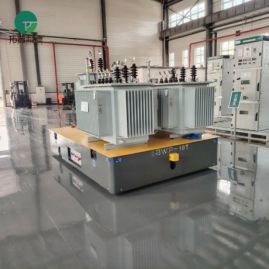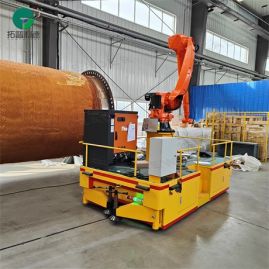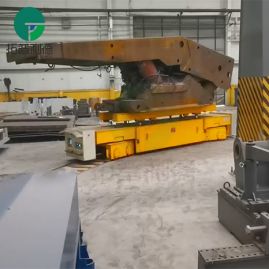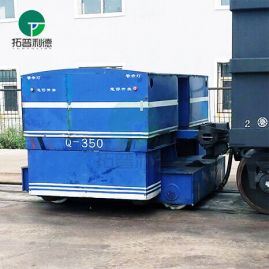Specific Requirements For Rail Laying Of Low-voltage Rail Powered Electric Transfer Carts
Specific requirements for rail laying of low-voltage rail powered electric transfer carts:
1. First, when laying the rail, you need to insulate the rail, wipe asphalt on the bottom of the rail, then place 5mm insulating rubber sheets, and add asphalt sand on both sides of the rail. Also, it is important to note that the resistance between the two rails should not be less than 10 ohms.
2. For the connection of the same rail or rail to rail, it is recommended to use welding connection to ensure good contact.
3. The voltage on the rail must not exceed 42V, and the voltage at the end of the line must not be less than 30V, if there is no compensation line.
4. In addition, since the power supply is from the rails, no metal objects between the rails can touch the two rails at the same time to avoid short circuit.
5. A single step-down transformer is connected to the rail, and the running distance of the electric rail transfer cart is generally 70 meters. If the running distance is long, the number of transformers should be increased and a multi-point power supply method should be selected. The power supply transformers should be connected to the same power phase point, and the number of transformers generally does not exceed three.
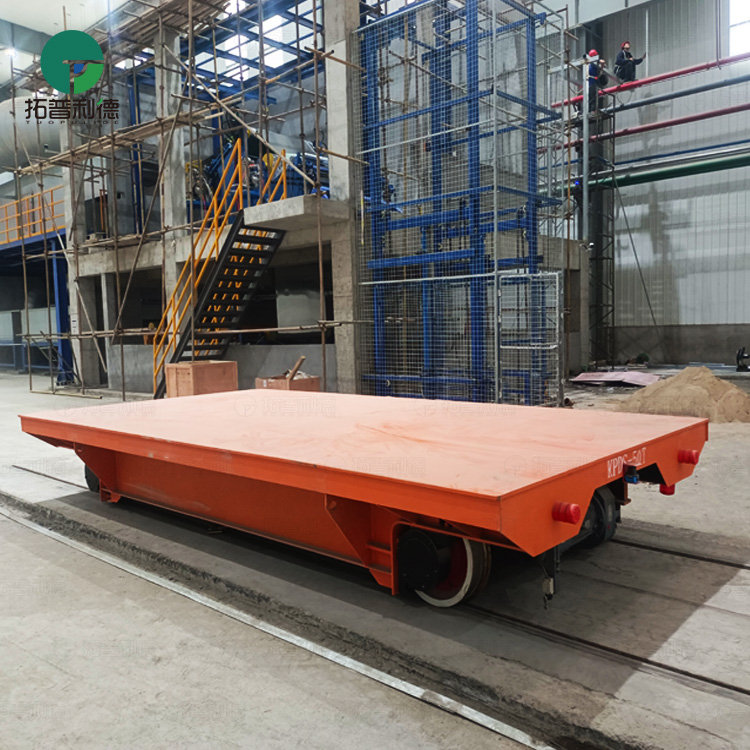
Rail transfer cart operating procedures:
1. Before entering the workshop, staff must wear labor protection supplies and protective equipment, otherwise they cannot enter the production line.
2. Before using the electric rail transfer cart, you must check whether the exterior of the vehicle is intact, whether the transmission device and its lubrication are normal, and remove production waste or large obstacles accumulated on both sides and in the middle of the rail, as well as items that may affect the normal use of the electric rail transfer cart. A use signal should be given before starting.
3. During the operation of the electric rail transfer cart, emergency starting and emergency braking must be prevented to avoid accidents caused by the slippage of the inertial load-carrying object.
4. During the operation, two people must work at the same time. One person operates the electric rail transfer cart, and the other person pays attention to the items in the car and the surrounding conditions, reminds passing staff to pay attention, contact the operator in time, and take corresponding measures to avoid harming others or oneself.


